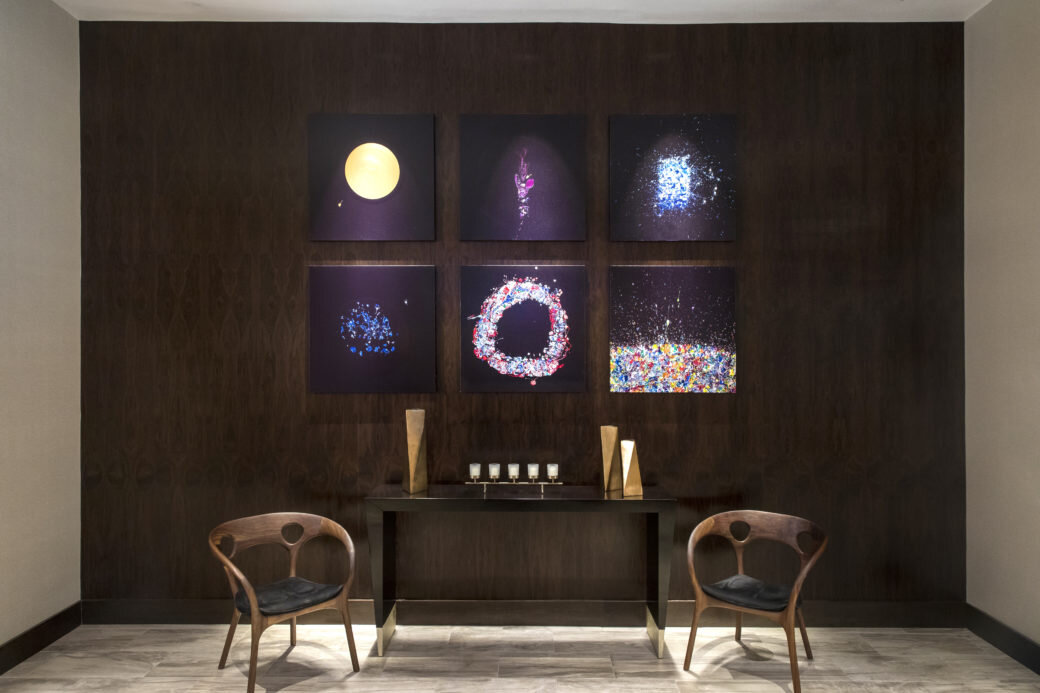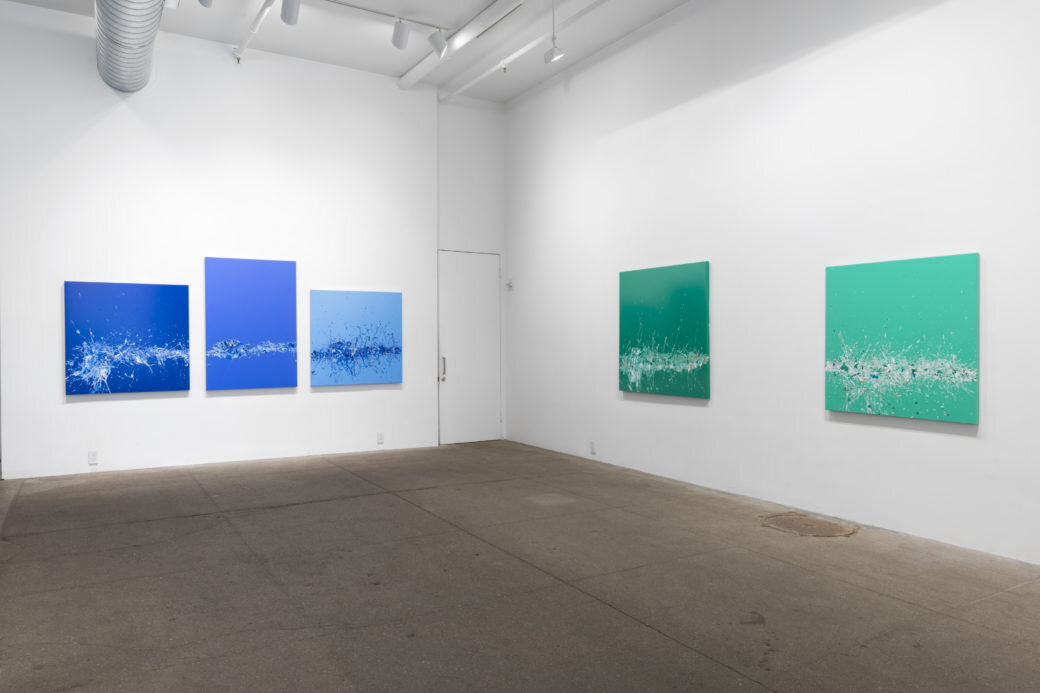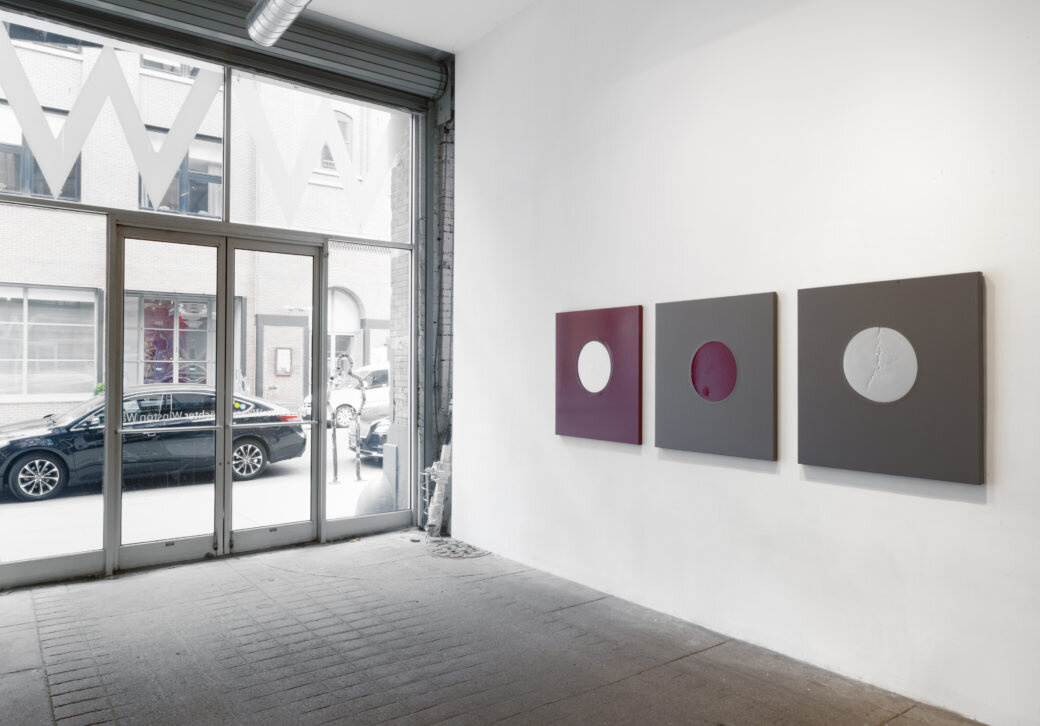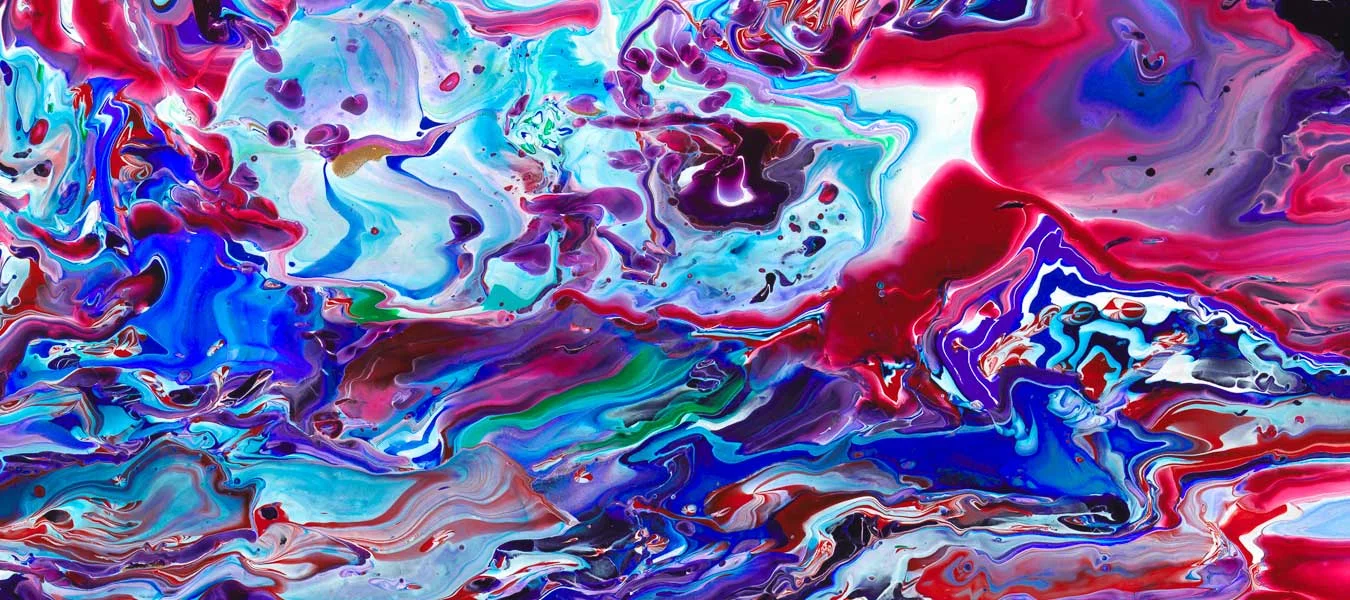Ed has taken on each of his studios with a willful determination to make something which is exclusively his and containing all he needs to feel himself in the space. He has resembled a Bowerbird bringing amulets and colored glass to its twig bower where it then performs the ritual display it is genetically destined to complete. The studios were filled with books, chains of beads, Buddhas, art of fellow artists, postcards of Paris and the Dalai Lama–everything converging and verging toward the chaotic. They were generative of, and responding to, a need to create something meaningful and beautiful, a driving force that he has lived with for as long as I have known him.
Read MoreWinston Wächter Fine Art, New York is pleased to announce its third solo exhibition with New York-based painter Ed Cohen, I am nobody. Who are you? Cohen’s new body of work draws its titles from the writings of Emily Dickinson, and explores the tension between the fragility of life and Dickinson’s notion of immortality, the dialectics between rebellion and community, futility and purpose, sorrow and joy, solitude and kinship. The show explores and expresses humanity’s eternal search for purpose.
Read MoreSaul Ostrow
When writing a catalogue, it is thought that all a writer needs, besides a point of view, is one good idea around which to construct his or her essay. As for the essay’s form, this is perceived as somewhat prescribed, in that writers may choose to present their views in one of two ways: as a meditation on the work or as an analysis of its constituent parts. Then there is the question of approach: the essay can be personal appreciation or a profile of the artist, or it may seek to establish a suitable historical or philosophical context for the work.
Read MoreDarian Leader
Reading the title of a painting by Ed Cohen one wants to know more. The Form the Pleasure Took, As If an Ocean, or The River is Fateful are elliptical, their compressed and disjunctive grammar both condensing and obstructing the release of meaning. We assume that they are sentences or phrases taken from a specific context, but this is left unclear, like pages from the middle of a book.
Read MoreWhere Art & Pop Culture Culture Coincide with History and Politics
The Nothing That is Not Here
Myriad dialogues—with their inherent networks of influence and intention—come together as an ensemble in the colorful, abstract canvases of Ed Cohen. While Cohen’s works reflect his intellectual and emotional life, they are a spiritual exploration.
Read MoreEd Cohen's seductive process-oriented paintings record the fluid relationship between paint, gravity, and gesture.
This exhibition consisted of mostly square canvases in which circular forms radiate into and within the edges of the frame. The prevailing colors in these works were sanguine crimsons and purples, evoking blood, and ultramarine, which produced an otherworldly light suggestive of sky and water.
Read More













